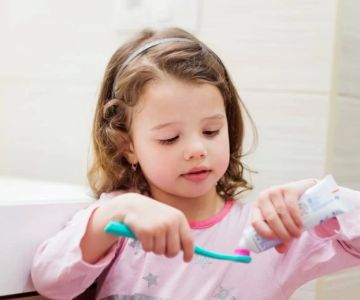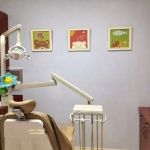Why Teaching Children About Oral Hygiene Is Crucial
Oral hygiene forms the foundation of a child’s overall health and well-being. Good dental habits established early help prevent cavities, gum disease, and other dental issues that can affect a child’s confidence and quality of life. Parents and caregivers in the United States play a vital role in guiding children through the journey of learning effective oral care routines.
Sarah, a mother from California, noticed her six-year-old son was reluctant to brush his teeth. After researching fun ways to engage him, she implemented games and stories during brushing time, transforming it into an exciting daily ritual. This example illustrates how teaching oral hygiene can be both effective and enjoyable, leading to lasting healthy habits.
1. Starting Early: Introducing Oral Care to Toddlers
1.1 The Importance of Early Dental Habits
Even before the arrival of baby teeth, parents can clean their baby’s gums with a soft, damp cloth to remove bacteria and familiarize the child with mouth cleaning. Once teeth begin to erupt, usually around six months, introducing a child-friendly toothbrush with soft bristles helps build comfort and familiarity.
1.2 Making Brushing Fun for Toddlers
Using colorful toothbrushes featuring favorite cartoon characters and flavored toothpaste designed for children can motivate toddlers. Singing songs or playing two-minute timers turns brushing into an enjoyable activity, reinforcing consistency.
2. Teaching Proper Brushing Techniques
2.1 Age-Appropriate Methods
Children aged 2 to 5 require parental assistance in brushing to ensure all tooth surfaces are cleaned properly. Demonstrating circular motions and gentle strokes helps protect gums and enamel. By age six, children can begin brushing independently but should still be supervised.
2.2 Using Visual Aids and Tools
Educational videos, charts, and apps that show the correct brushing technique can engage children and provide a visual reference. Some parents find that brushing alongside their children encourages better habits and models proper care.
3. Incorporating Flossing and Mouthwash Into Daily Routine
3.1 Introducing Flossing
Flossing is essential to remove plaque and food particles between teeth where brushes can’t reach. Starting around age 2 to 4, caregivers should assist with flossing, progressing to independent flossing as the child gains dexterity.
3.2 Mouthwash Use and Safety
While mouthwash can be beneficial, children under 6 should avoid it unless recommended by a dentist due to swallowing risks. For older children, alcohol-free, fluoride rinses help reduce bacteria and strengthen enamel.
4. Building Awareness About Diet and Oral Health
4.1 Impact of Sugar and Acidic Foods
Diet plays a crucial role in oral health. Educating children about limiting sugary snacks and drinks reduces cavity risk. Offering healthy alternatives like fruits, vegetables, and water encourages better choices.
4.2 Teaching Hydration Benefits
Drinking plenty of water helps wash away food particles and maintains saliva flow, which protects teeth. Making water fun by adding slices of fruit can encourage kids to drink more.
5. Visiting the Dentist: Making Checkups Comfortable
5.1 Preparing Children for Dental Visits
Introducing children to the dentist early—typically by their first birthday—builds familiarity and reduces anxiety. Explaining the visit in positive terms and reading books about dental care helps prepare them emotionally.
5.2 What Happens During a Pediatric Dental Exam
During checkups, dentists examine teeth, gums, and jaw development. They clean teeth, apply fluoride treatments, and advise on care. Regular visits identify problems early and provide reassurance.
6. Encouraging Lifelong Oral Hygiene Habits
6.1 Positive Reinforcement and Routine
Consistent routines and praise motivate children to maintain good habits. Reward charts or small incentives encourage responsibility and pride in oral care.
6.2 Role Modeling by Parents and Caregivers
Children imitate adults. When parents prioritize their oral hygiene and demonstrate enthusiasm, children are more likely to follow suit. Family brushing time can become a bonding and educational moment.
For trusted advice and access to pediatric dental services, visit Dentistry Toothtruth. Their expert guidance ensures children in the U.S. receive the best care and education to keep their smiles healthy for life.






 Lakeview Family Dental4.0 (40 review)
Lakeview Family Dental4.0 (40 review) Eastland Family Dental4.0 (247 review)
Eastland Family Dental4.0 (247 review) Dental Depot4.0 (139 review)
Dental Depot4.0 (139 review) Valleywise Community Health Center - Mesa3.0 (252 review)
Valleywise Community Health Center - Mesa3.0 (252 review) Stephen F Selden DDS LTD4.0 (10 review)
Stephen F Selden DDS LTD4.0 (10 review) Promenade Dental Group and Orthodontics4.0 (347 review)
Promenade Dental Group and Orthodontics4.0 (347 review) The Importance of Oral Health Education During Pregnancy for a Healthy Pregnancy
The Importance of Oral Health Education During Pregnancy for a Healthy Pregnancy Best Tips for Brushing Your Teeth Properly for Healthy Gums: Essential Techniques for Oral Health
Best Tips for Brushing Your Teeth Properly for Healthy Gums: Essential Techniques for Oral Health Why Skipping Dental Checkups Can Lead to Bigger Oral Health Problems
Why Skipping Dental Checkups Can Lead to Bigger Oral Health Problems Advantages of Porcelain Dental Restorations
Advantages of Porcelain Dental Restorations How Can Diabetes Cause Tooth and Gum Problems? Preventing and Managing Oral Health Issues
How Can Diabetes Cause Tooth and Gum Problems? Preventing and Managing Oral Health Issues Healthy Habits for Promoting Good Oral Health and Hygiene: Tips for a Healthy Smile
Healthy Habits for Promoting Good Oral Health and Hygiene: Tips for a Healthy Smile